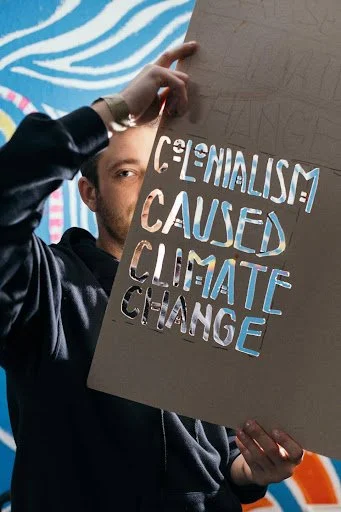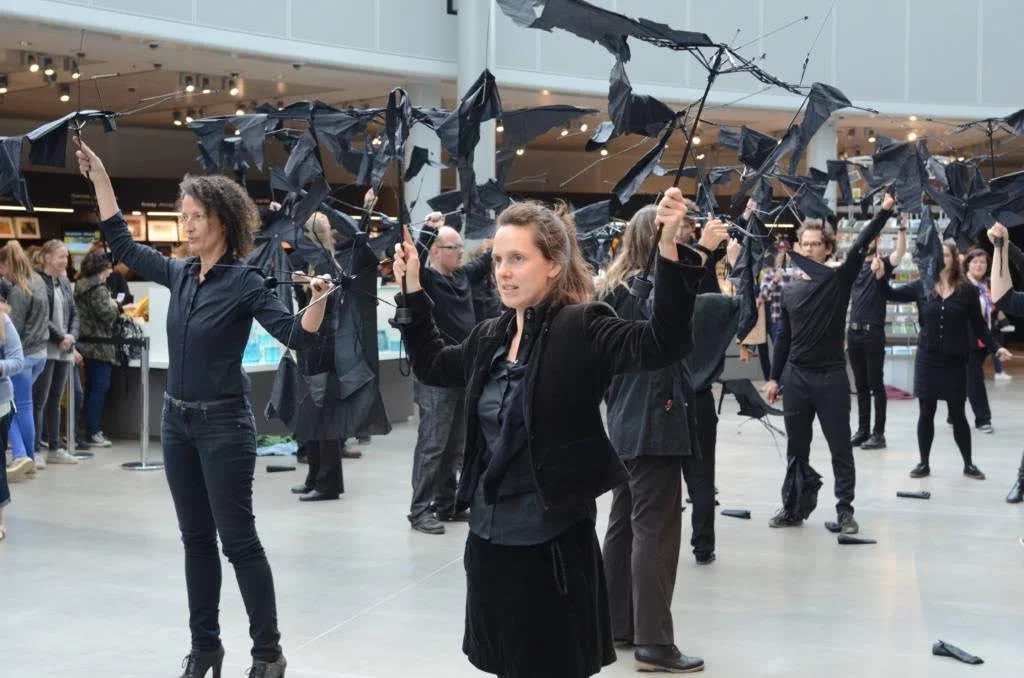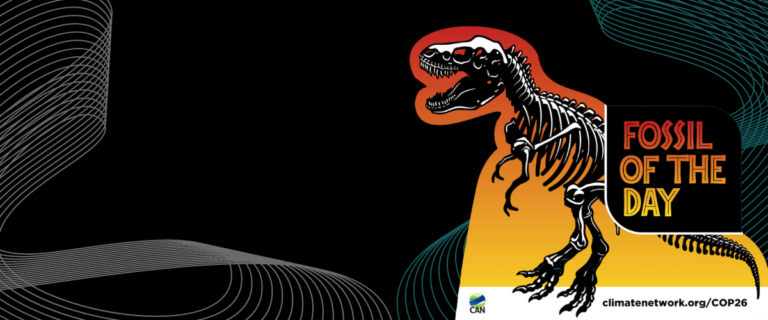The Artivist Network: Bridging the Gap Between Art and Advocacy
By Daniella Angulo
Daniel Rupazow is part of The Artivist Network, a collective of arts activists and facilitators putting creativity into advocates' toolboxes. Their focus on art supporting climate justice helps the environmental movement reach new communities. Bridging the gap between the worlds of art and activism doesn’t come easy! We spoke with Daniel during an especially busy season— The Artivist Network is planning actions for COP 29 in Azerbaijan and has just released a Tactics Manual on advocacy around toxic bonds. We learned a lot from their vision and are excited to share it with you!
Daniel photographed at COP 21 in Glasgow. (Photo Credit)
To start things off, what do you define as artivism?
That’s hard! Whenever someone uses creativity to send a message or make people think…whenever someone is using art as a strategic tool for change, the medium doesn’t matter. A sticker can have the same impact as a large-scale mural. One-person street theater can have the same impact as a flash mob inside a museum. I think it can be many things.
An inflatable pipeline was created for the march against the European Gas Conference in April 2024. (Photo credit: @artivistnet)
Can you detail a bit of the Artivist Network’s history and purpose?
We started in 2013 by supporting European climate camps. They planned direct actions, but lacked creative strategy. That’s where we came in. Later, for COP 21, we ran a creative space where people used sewing machines and painted 100-meter long banners, culminating in mass actions around December 12, 2015. After that, we officially became The Artivist Network.
We work across Budapest, Spain, and Southeast Asia. Although we’re a small team, our international presence lets us support a massive web. People can always reach out to us for production support. Recently, we made inflatable pipelines for actions around gas in Europe. We also made inflatable cubes with Tools for Action, a Dutch collective doing amazing work.
We work with grassroots movements, supporting Indigenous and frontline communities while looking at big-picture mass mobilizations. We do educational outreach and offer ‘training for trainers’ programs. We want them to be open-source and accessible. The tools we feature aren’t expensive and don’t require great skills to be visually good.
We want to create bridges between artists and activists. Many artists want to do something but don’t know how to be involved. Meanwhile, activists don’t always know how to create visual appeal. We combine roles and facilitate skill-sharing between the mediums and types of people in these spaces. We hope this puts creativity at the forefront when people think of climate action, bringing systemic change to the creative industry, too.
Fossil Free Culture demonstrators staging an action at The Van Gogh Museum. (Photo Credit: Fossil Free Culture NL)
What are your thoughts on how the use of art for environmental justice has evolved over the past few years?
People used to want art, but only at the last stage, without time or resources. Art shouldn’t be the last step. You can’t work on important issues but lack anything showing your messaging. More groups are now using art as an initial organizational tool.
When we started, those reaching out were activists wanting to incorporate creativity. Now, it’s more artists and institutions. Institutions realize people are less interested in putting art in galleries. Artists may not see that as their mission. They feel pressure when looking at what’s going on in the world.
People are putting more funding towards arts activism, but it’s tricky. If you’re applying for funding, you get critiqued as not ‘artist enough’ or ‘activist enough.’ Some feel artists should be more ‘artistic,’ and movement funders don’t think art is important for organizing.
We know this isn’t true. We see the benefits both ways; arts activists working with communities, communities using art to tell their stories. XR’s Art Group is a great example of something radical with a good design identity. Whether or not you think their tactics are ‘good’ or ‘bad’ activism, their graphic design is always inspiring. The Netherlands’ Fossil Free Culture advocated divestment from fossil fuels, and it worked – thanks to them, the Van Gogh Museum broke ties with Shell.
With COP coming up, can you speak to what your organization’s previous work around these has been? What plans do you have for this year?
Before COP in Egypt, we focused on what was happening on the streets. We’ve since adapted to countries that bar public protest. We began working in private studios to support interventions and shifted to inside the UN.
We help organizations with UN bureaucracy. The UN has its own protest rules that may differ from the host country’s. We advise groups based on their guidelines and liaise with the Secretariat to approve actions.
This year, resident artists from Malaysia, Hungary, Turkey, and Lebanon will create art for our actions. We also support a daily theater piece recapping what’s happening inside COP. It’s a privilege, because the performer is the only one allowed to name countries. It’s called “Fossil of the Day,” and it’s an awards ceremony for the worst countries. We always want to collaborate with the different collectives present. It’s a busy two weeks!
I’m also interested to learn more about your community outreach efforts as a whole. From murals, workshops, publications, and training, it seems like you do a lot to make artivist education accessible. How does this work in practice?
We’ve always tried to make art and its tools accessible. We want to inspire people and then think through the logic of how creativity can be used for action. Our educational work mostly takes place online, which is good for accessibility. I do a lot of mural workshops. We share technical skills, but also go through the act as something that will be part of the community and think through what that means. We question how to approach locals, which spaces are near the painting, what would look good, and which community actually benefits from having public art, especially in cases where there may be less government support.
We teach creative organizing and communication through different mediums. Our team has people doing street theater, Theater of the Oppressed workshops, murals, spoken word, and graphic and protest design. We also try to invite other coalitions so our audience can learn from a wider spectrum.
We’ve also just published our Tactics Manual, which was created as a handbook on what to do and how to execute actions. It’s part of the ‘Toxic Bonds’ campaign. Toxic bonds are those issued by financial institutions for fossil fuel companies. We’re supporting actions for their ‘maturity dates,’ which is when the bonds are reissued throughout the year.
It’s a resource with tutorials, other collectives’ manuals, and information ranging from subvertising to making guerilla projections and how to crash public events. While it’s made for a certain campaign, it’s for anyone looking to do creative actions.
Finally: how can someone best support your efforts, and that of artivists for environmental justice as a whole?
I think people underestimate the power of art. Everything you do in public has an impact.
Sharing our work is useful. You can always reach out to us if you need any kind of support. But that’s us supporting them…It’s a bit harder to answer how to support us! Visibility is useful for us. All art for something useful is powerful. Even if it makes a few minds change, you’ve achieved one goal as an artist.
A huge thank-you to Daniel for sharing more about The Artivist Network’s activities! To keep up with their projects, follow them @artivistnet. COP 29 is right around the corner—make sure you’re in the loop!






